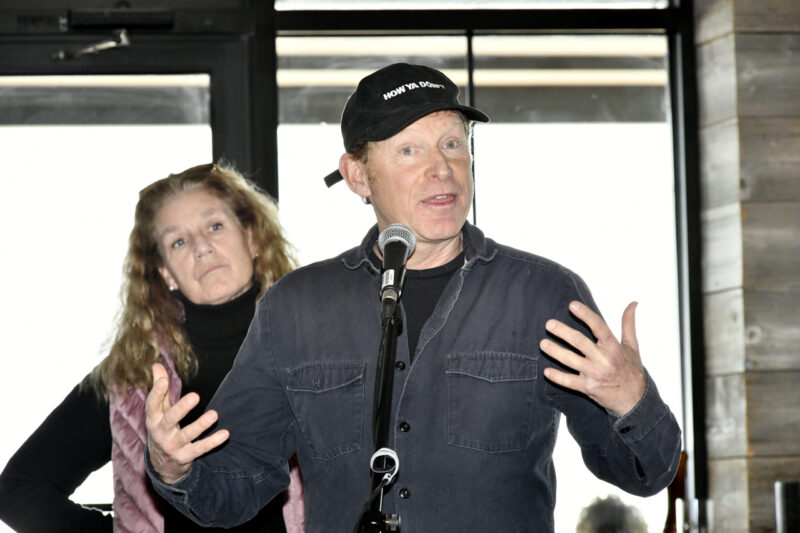
Among the many vexing issues facing town planners and elected officials as they try to gameplan “managed retreat” in Montauk away from the sea is where, exactly, to retreat to.
In a hamlet study, consultants had suggested that some hotel development could simply be allowed to migrate to the “second row” of existing hotels, just back from the beach, and that other hotels, as well as other business in low-lying areas, like the IGA grocery store, could shift to higher ground on the northeastern fringes of the current downtown.
But at the Express Sessions conversation on the topic on Thursday, April 28, one Montauk homeowner with a passion for resiliency planning suggested that the town should be looking much farther down the road — literally and figuratively — and making moves to lock up chunks of undeveloped land now, while they are available.
“There’s no wetlands, it’s not developed, it’s got beautiful views — you could put all the mixed-use receiving areas here and make it so the only way it could be developed would be with the [transferable development rights],” Krae Van Sickle said on Thursday, standing in the parking lot of the Montauk Playhouse. “You could have hotels that have the best views in Montauk, you could have the IGA out of harm’s way, and you could associate all those things with a critical services hub that would save lives.”
Van Sickle, a real estate agent, Montauk property owner and member of the town’s Energy and Sustainability Committee, said that he has been pitching the idea of shifting some of downtown Montauk’s development to the sparsely developed hillsides on either side of Flamingo Road for years.
He sees the area just above the railroad station, Montauk Fire Department Firehouse and the Montauk Playhouse as the perfect place to create a new commercial area that would be untouchable by rising waters, even if Montauk were to someday be an island itself.
The town’s consultants have said that shifting development only relatively slightly in the downtown area — still a massive undertaking, both conceptually and logistically — will suffice to protect the downtown area more or less as it is from the effects of a warming planet and the rising seas it will bring for several decades.
But Van Sickle says that moving more development even higher would provide centuries of resilience and present an opportunity to pair new development with a micro-grid power “island” to provide a well-defended hamlet capable of weathering severe storms that may cut off power supplies that currently come only from far to the west. New development, and upgrades at existing facilities, could be outfitted with extensive solar and wind-generated power sources, feeding battery storage that has already been created on Industrial Road, allowing for a certain level of energy independence in a crisis.
“Montauk is as vulnerable as any place anywhere,” he said. “The nearest power source is, what, 45 miles away? That’s single point-of-failure. We’re a sitting duck here.”
There are two fairly large swaths of land on the south-facing hillside. Much of it is undeveloped and has been on and off the market over the years.
One portion was thrust into the spotlight in 2019 after East Hampton Town asked the Long Island Power Authority and PSEG Long Island to put its new substation on higher ground. The utility identified land on the hillside along the east side of Flamingo Road as a potential landing site. Outrage from residents over what was thought would be a horrific eyesore killed the deal and the land, which is subdivided for residential lots, remains undeveloped.
Across the roadway is another broad section of land with a number of building lots that have been for sale at times, Van Sickle said.
In his vision, the town should be making moves to purchase those lands now, even if they won’t be needed for a decade — or two or three. Otherwise they will undoubtedly be developed eventually, and if it did ever come to pass that the community moves up the hill, the land would have to be seized through eminent domain.
“They should not let this get developed,” Van Sickle said. “You could address the cause of climate change and address the impacts of climate change in the same place, and solve your problem of moving away from the shore — all in this one spot.”